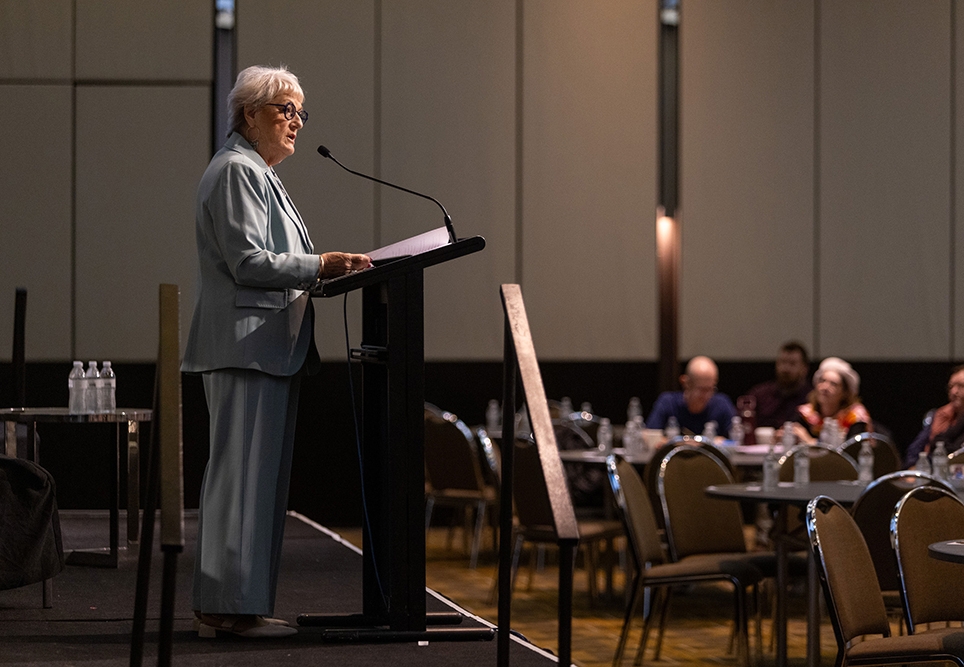
On the Bush Support Line, we frequently receive calls from rural and remote health workers who want support as they are experiencing challenges in their workplace. What are some of the ways you and your team can invest time in building a safe and happy workplace?
The Gottmans are world-renowned relationship gurus who have established The Gottman Institute and are leaders in relationship research, education, and support. They developed The Sound Relationship House(1), a concept based on decades of research, that outlines how to build secure partnerships in an intimate relationship.
Given how closely we live and work with each other in rural and remote health, our relationships with our colleagues can be just as important as those with an intimate partner. Therefore, we’ve adapted the Gottman’s concepts to consider the nature and needs of building a functional and happy workplace.
When working in rural and remote health settings, relationships can have unique pressures and challenges. We can have a limited choice of people around us to form relationships with, and sometimes we may find ourselves in roles within relationships that can become quite intense very quickly. Some examples of this could include sharing a house with a colleague, seeing them every day at the one pub in town, or playing the same sports. In rural and remote workplaces, we often find that our colleagues become our friends. When the relationship has been built well, and we have a good relationship, this may not seem too much of an issue. However, this may be a different situation if the relationship has not been built according to the builder’s code.
I want you to imagine a multi-floor house. Now, imagine this house represents your workplace, and let’s explore its different levels and structures.
Floor 1: Getting to know each other
Do you know all the people in your workplace? Not just their name, but things about them such as their likes and dislikes, their cultural and spiritual backgrounds and beliefs, things they enjoy and dislike about their role, what they do for self-care, what they want to learn more about and what areas they already know a lot about. This would be done with all team members, regardless of their role and if they are permanent, part-time or contract staff. Be mindful that not everyone likes to share everything about themselves; some are open books, while others are very private and will share little pieces of information over a long period. However, you can learn a lot about a person from casual conversation without it sounding like you are filling in an online dating profile.
Floor 2: Talking nicely to each other
Say what you appreciate about a person out loud as hearing the pleasant things others think of us is meaningful. Examples could include, “I like how you talk to new patients and spend the time listening to them”, “I appreciate working alongside you in high-stress situations as I always feel so calm”, and “I love how kind you are to people on the phone, even when they can be challenging to deal with.” Other options could be the clinical skills you admire or appreciate in someone.
Floor 3: Turning towards someone for help
Nurture an environment where someone can ask for help and express their needs safely, which requires you to listen and respond without judgement, but with care and support. I am fortunate to be able to do this within my team with anything IT-related. I know that I can go to anyone and, if they don’t know the answer, they will direct me to someone who may know. They don’t make fun of or judge me, but support and care about what I am doing, even if they have to show me a few times.
Floor 4: Giving people the benefit of the doubt
Rather than assuming the worst, view situations through a positive lens which, in turn, contributes to team cohesiveness. For example, imagine one of your colleagues rushing past you without acknowledging you. Rather than thinking things like “How rude!” or “They are such a snob”, consider “I hope they are OK. I am going to check in to see how they are doing later” as a more helpful alternative.
Floor 5: Conflict is OK!
What!?!? Yes, conflict is absolutely OK, but it is how you do it. The Gottmans can predict divorce with 90 per cent accuracy just by watching how couples argue. All relationships should have conflict; how we manage that conflict will either help build our safe and happy workplace or watch it crumble. Have a look at The Four Horsemen and how to stop them with their antidotes : https://www.gottman.com/blog/the-four-horsemen-the-antidotes/(2) for ways to get better at effectively managing conflict. Try using “I” statements and asking for what you need. For example “I’m feeling frustrated about needing to induct all new contract staff as I find it hard to also keep up with my workload. Would you please organise a roster to do this?” Imagine a reply like “I’m sorry
I didn’t realise it was impacting your workload. I had just noticed how great you are at it and did not think about the implications it had on your time. That is a great idea to work out a roster to do it, I will get onto it straight away. Thank you for letting me know.” This request and response may be idealistic, however assertive communication often goes this way. If it doesn’t, you know where you stand and what remains in and out of your control moving forward.
Floor 6: Encourage goals
What are your goals in your workplace? Who do you share your goals with? How can they be achieved? Having goals and having them supported by colleagues and management in your workplace will help support this level of the happy workplace. Reviewing and supporting goals should occur regularly and not be a once-a-year discussion at review time.
Floor 7: Having a shared meaning
As a workplace, what is your shared meaning? What cultures or rituals do you have? For example, do you have a weekly shared morning tea, or an acknowledgement and cake for each team member’s birthday? What small intentions could you implement that would help to bring you all together as one team? As humans, we are hard-wired for connection. When we feel connected with others in our workplace it contributes to a happier workplace.
The walls of trust and commitment
We have discussed the important floors of our relationship house, yet the walls of trust and commitment are essential to holding our home together. I love Brené Brown’s research and her analogy of “The Marble Jar”(3), where we build trust through small moments or acts, and those moments are like marbles. We each have a marble jar with other people and to build trust, we need to put marbles in their jars, whilst they also put marbles in our jar. We need someone to show us they are deserving of our trust (and vice versa) through these small opportunities. Brené Brown has also established “The BRAVING Inventory”(4), which breaks down trust into seven elements. Have a look at them and maybe give them a go sometime this week.
When we have a solid house, with easily accessible floors, we have a happy and secure workplace. We feel safe, connected, settled, grounded, alert, mindful, and compassionate. We are in the optimal state to perform our duties, learn, thrive, and support others. We can maintain curiosity and be open to all that comes through our doors.
If you experience challenges in the workplace, you can call the BSL on 1800 805 391, where you will be greeted by one of our experienced psychologists who will provide you with a safe and confidential space.
References- Scott, J. (2024) What is the sound relationship house?, The Gottman Institute. Available at: https://www.gottman.com/blog/what-is-the-sound-relationship-house/ (Accessed: 5 July 2024).
- The Gottman Institute (2024) The Four horsemen: The antidotes, The Gottman Institute. Available at: https://www.gottman.com/blog/the-four-horsemen-the-antidotes/ (Accessed: 5 July 2024).
- Brown, B. (2023) SuperSoul sessions: The Anatomy of Trust, Brené Brown. Available at: https://brenebrown.com/videos/anatomy-trust-video/ (Accessed: 11 July 2024).
- Brown, B. (2023) Dare to lead the braving inventory, Brené Brown. Available at: https://brenebrown.com/wp-content/uploads/2021/10/DTL_BRAVING_102221.pdf (Accessed: 11 July 2024).



